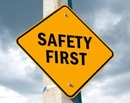
After derailments, blocked crossings and other complications, two members of the U.S. House of Representatives’ Committee on Transportation and Infrastructure have asked for the federal Government Accountability Office to study the effects of longer freight trains.
In the letter dated Nov. 7, ranking members Peter DeFazio, D-Ore., and Michael E. Capuano, D-Mass., made the request after referencing the derailment Aug. 2 of a CSX train in Hyndman, Pa.
The derailment of 32 cars from the train that consisted of five locomotives and 178 rail cars caused the evacuation of about 1,000 town residents and destroyed a house. The representatives noted in their letter that the average freight train consists of about 70 cars.
“Recent press reports indicate that some railroads are now operating trains with close to 200 or more cars that are more than two miles long,” they wrote. “We have concerns that longer trains can create unusually long delays at grade crossings and may pose safety risks to train crews and the public.”
DeFazio, a ranking member on the House Transportation and Infrastructure Committee, and Capuano, a ranking member on the Railroad Subcommittee, also mentioned operational challenges for rail workers, such as possible loss of radio contact, or service delays as a direct result of the longer trains.
“We appreciate that these congressional leaders have asked for a review of these dangerously long trains.” SMART-TD President John Previsich. “This issue was also addressed by John Risch, our national legislative director, at a recent STB hearing.”
Risch appeared Oct. 11 in Washington D.C. before the Surface Transportation Board at a listening session focused on problems with CSX’s service.
“Urging CSX to do better will not fix the problems that excessively long trains cause,” Risch said during his testimony. See a full article and video of that testimony here.
DeFazio and Capuano’s letter asks the GAO to look into various aspects of longer trains from the perspective of rail worker and public safety and also to examine the levels of oversight available on the federal, state and local levels to remedy safety concerns posed by longer trains.
To read the letter, follow this link.
Related News
- New Jersey Train Length, Crew Size Law Awaits Governor’s Signature
- CSX Conductor, Single Mother Devastated in Head-on Collision
- GP Coleman’s 2025 holiday message to members
- SOFA Safety Alert
- AJFL Scholarship Application Opens Soon
- SMART-TD Applauds FRA and DOT for Strengthening Cross-Border Rail Safety Protections
- Michigan sheet metal worker details impact of canceled project
- Regional Training Seminars coming to St. Paul, Baltimore in 2026
- SMART leaders train to bargain better contracts in Atlanta
- Chicago-area SMART members win big with transit funding bill